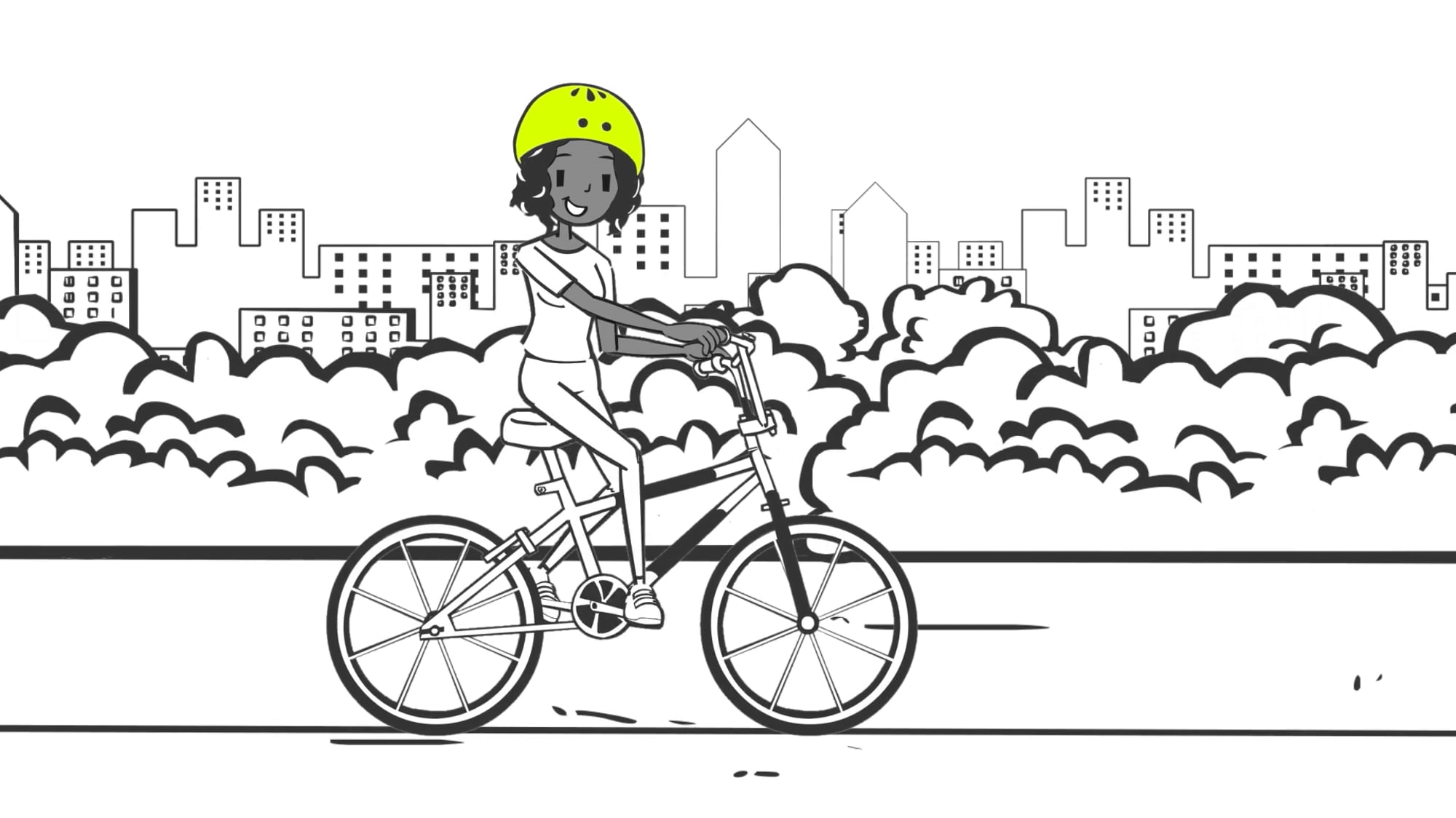When children are very young, parents and caregivers are responsible for their every need. During those early years, you likely developed a routine in which you could anticipate what your child wanted and when they wanted it, and you were usually able to meet their needs. However, as children grow and begin to explore the different environments around them, such as their home, school, or the outside area where they play, they learn from these surroundings and from the experiences they have in these settings. As this learning occurs, your child is gaining autonomy or independence and is learning how to make their own decisions. Although this can be an exciting time, parents may find this shift difficult, even scary, as they begin to let go, or step back, to allow their children to have these new experiences.
Parents want their children to be happy or content, and they hope their children will accomplish or meet many goals as they grow and become adults. In order to help your child be successful like this you must also encourage and allow them to build skills and resiliency through their own lived exploration and experiences! Having resiliency, or the ability to summon coping skills and find ways to address difficult or adverse situations, is essential in life as all people will face setbacks. So, how can you continue to help your child try, and maybe fail, in a way that will help them build that resiliency and help them learn to navigate their world?
Highlighted below are strategies and examples that may help you provide the space and opportunities your child needs to try, to maybe fail, and to succeed. These strategies can look different depending on the age of your child, so let’s look at a few scenarios.
Infants and Toddlers
As a child starts to walk, they begin to explore their world in a new and exciting way. Walking is a new skill for them, and you will likely watch them stand, wobble, fall, and, ultimately, try again over and over until they are successful. During this experience, your child will try, and will fail, but they are learning resiliency as they keep trying! So, remember, you may want to reach out and help them, but they need to learn to walk on their own.
How You Can Help: Practical Strategies
So, how can you help your child learn as they fail?
- Use encouraging words with your child.
- Offer them a smile, and show approval when they try and when they succeed.
- Give a reassuring hug, or wipe their tears when they become frustrated.
With your help, they will learn that, even when they fall, it’s okay to get back on their feet and keep going, and they have someone to turn to in difficult times.
You can find more tips and strategies on how to encourage and support your 0- to 3-year-old child in Thrive’s Take Root program. To learn more or register for Take Root, visit the Thrive website here.
Preschool-Aged Children
At this age, your child may be learning how to communicate and play with other children their age. This could be a sibling, a new friend at the park, and even other children at the preschool they are attending. These new friendships will likely lead to conflict because every interaction they have may not be positive. However, they are learning important skills from these experiences, such as social and communication skills and empathy. They can refine these skills as they grow into competent and caring adults.
How You Can Help: Practical Strategies
Although your first instinct may be to interject and fix a situation for your child, try giving them time to figure it out for themself (if there is no threat to physical harm). You can let your child know that you are there and ready to support them, but giving them the chance to work out a disagreement with the other child can be helpful. If your child cannot navigate the situation themself, or they ask for help, try using these strategies.
- Acknowledge their feelings.
- Ask questions to gather information.
- Restate the problem.
- Navigate solutions together.
Using these steps could help your child feel heard while they are learning how to problem solve!
You can find more tips and strategies on how to problem solve with your 3- to 5-year-old child in Thrive’s Sprout program. To learn more or register for Sprout, visit the Thrive website here.
School-Aged Children
School-aged children will start learning new concepts at school such as math, reading, and spelling. Your child may be struggling with learn how to spell their weekly word list, and they may want to just give up. Seeing your child struggle may be hard to watch, and, even though you may have established strategies with them to help practice their spelling, they may refuse to do the work. As their parent, you understand the consequences of them quitting. In the end, they may fail the test and bring home a poor grade. Now, your child must learn about consequences – or how their actions affect outcomes.
How You Can Help: Practical Strategies
In this situation, the consequence will be that your child will learn that by not trying or working through a problem, they will receive a bad grade, which may have other negative repercussions. Consider using these strategies as you help them through this situation.
- Listen to their explanation attentively.
- Focus on and talk about how they are feeling.
- Validate that you support their feelings.
- Encourage them to set attainable goals that will help them reach their objectives.
They may even have suggestions for a solution that you didn’t think of!
You may feel tempted to reach out to their teacher, so your child may have a second chance. However, in this type of situation, this may not be a helpful tactic as you may teach your child that you can and will fix their problems for them. If you decide that reaching out to the teacher is warranted, include your child in the meeting and/or conversation, and use the situation as a problem-solving experience for them. Involving your child shows them that you and their teacher care about them and are interested in helping them learn and succeed. In addition, it could offer an opportunity for your child to contribute to how they can adjust their behavior and performance in the future!
You can find more tips and strategies for listening and reflecting with your 5- to 10-year-old child in Thrive’s Grow program. To learn more or register for Grow, visit the Thrive website here.
Adolescents and Teens
As your adolescent or teen explores their personal identity, they may be trying new activities such as sports or clubs in their school. This could include trying out for a part in the school play or a spot on the football team or running for class president. Let’s consider this last example. You may have watched your child work hard on learning what being class president means and what holding this position entails with regard to time and responsibilities. They may have spent hours preparing their speech; however, suppose they are not elected. This likely will be hard for them to deal with, and it may be hard for you to watch this setback. As the parent, though, you have a good opportunity here to discuss their feelings as they face disappointment.
How You Can Help: Practical Strategies
Here are some strategies you might try as you help your child cope with this situation.
- Validate their feelings by listening to them talk about their disappointment.
- Acknowledge their feelings, and allow them time to have those hard feelings.
- Ask your child questions about the situation.
- Restate what you hear to ensure you both fully understand the situation and to be sure your child knows they are being heard.
- Tell them about a time when you faced disappointment. They may not be ready to hear about this yet but you can help them see that even adults face and overcome disappointment. Explain to them how you handled the situation.
- Discuss with your child how they want to move forward with regards to the situation. This collaboration and communication can allow your child to see you, the parent, as someone who has faced these big feelings and setbacks and has moved on. Communicating can also encourage your child to try again since they know someone close to them who has experienced something similar!
You can find more tips and strategies for communicating with your adolescent or teen in Thrive’s Branch Out program. To learn more or register for Branch Out, visit the Thrive website here.
As uncomfortable as it may be, experiencing failure is a part of life. Everyone can learn from mistakes and missteps, and children are no different. Remember, times of failure can be opportunities for your child to learn not only how to fail but how to learn from those failures.









